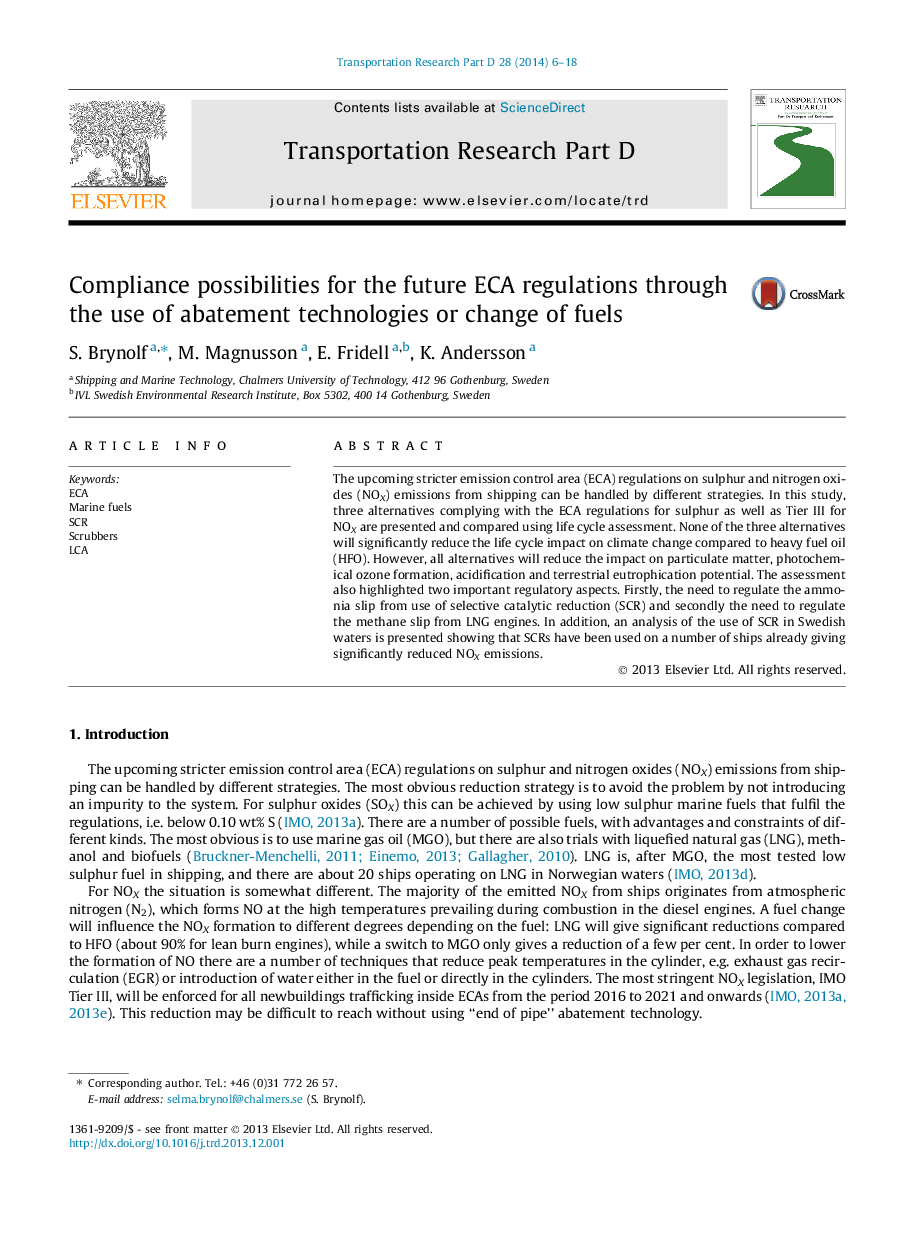| Article ID | Journal | Published Year | Pages | File Type |
|---|---|---|---|---|
| 1065828 | Transportation Research Part D: Transport and Environment | 2014 | 13 Pages |
•Comparison of three options complying with ECA sulphur and NOX tier III regulation.•These options do not reduce the impact on climate change in the fuel life cycle.•SCRs are effective for NOX reduction for sufficiently high exhaust temperatures.
The upcoming stricter emission control area (ECA) regulations on sulphur and nitrogen oxides (NOX) emissions from shipping can be handled by different strategies. In this study, three alternatives complying with the ECA regulations for sulphur as well as Tier III for NOX are presented and compared using life cycle assessment. None of the three alternatives will significantly reduce the life cycle impact on climate change compared to heavy fuel oil (HFO). However, all alternatives will reduce the impact on particulate matter, photochemical ozone formation, acidification and terrestrial eutrophication potential. The assessment also highlighted two important regulatory aspects. Firstly, the need to regulate the ammonia slip from use of selective catalytic reduction (SCR) and secondly the need to regulate the methane slip from LNG engines. In addition, an analysis of the use of SCR in Swedish waters is presented showing that SCRs have been used on a number of ships already giving significantly reduced NOX emissions.
